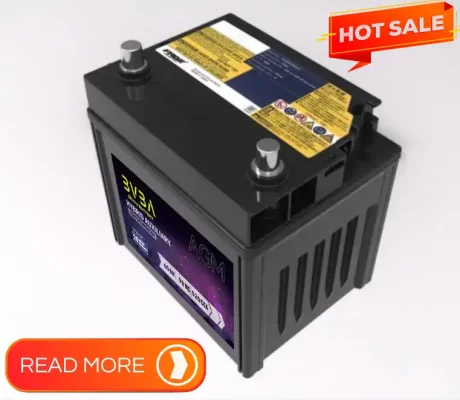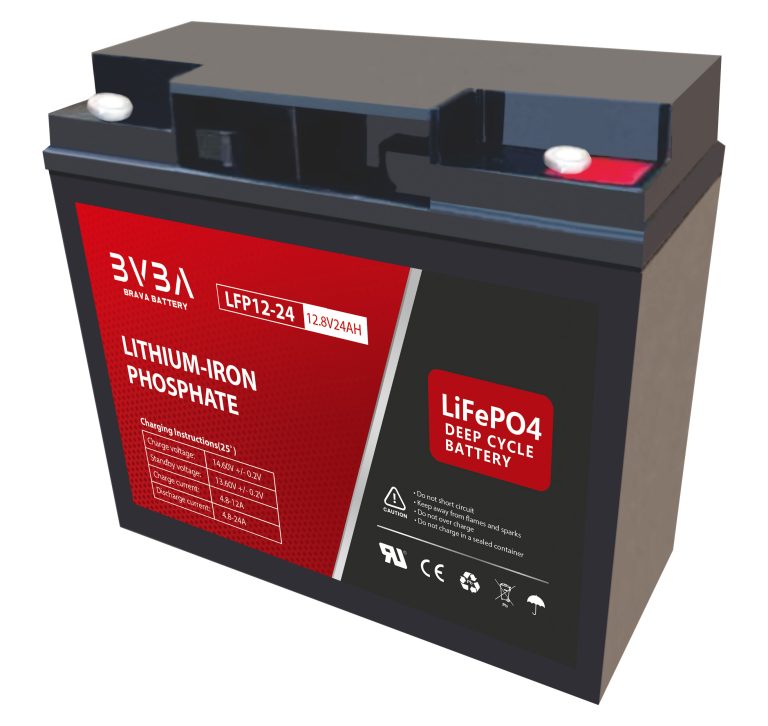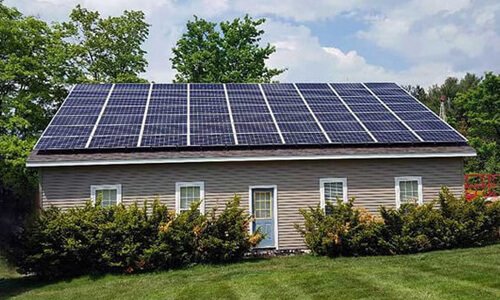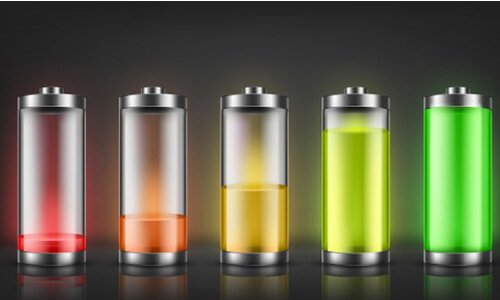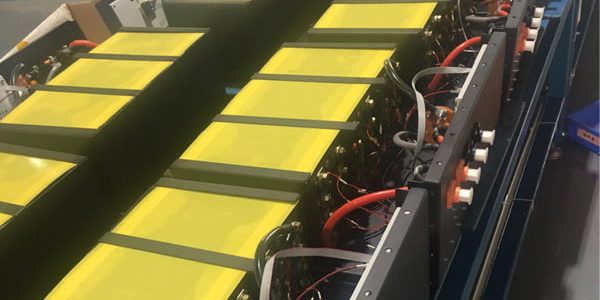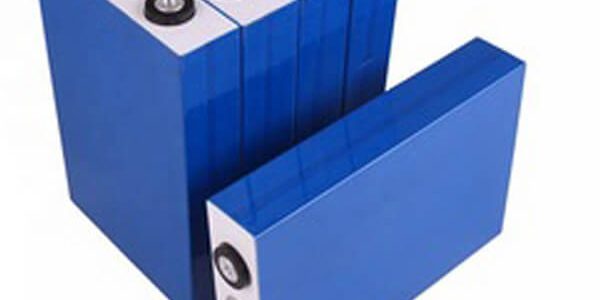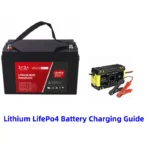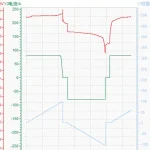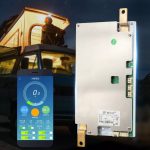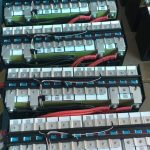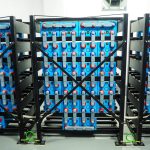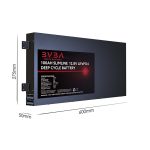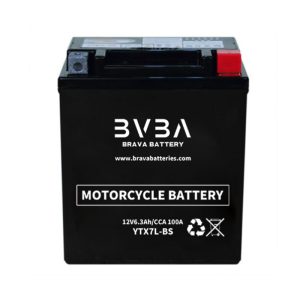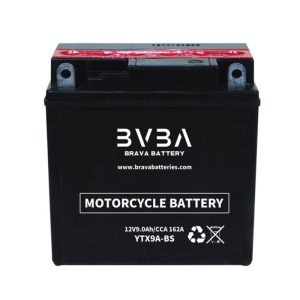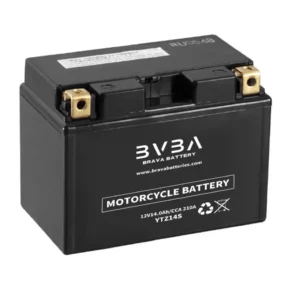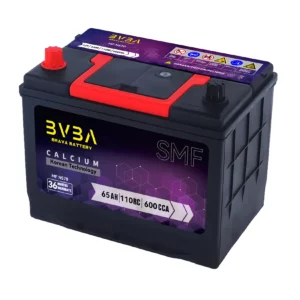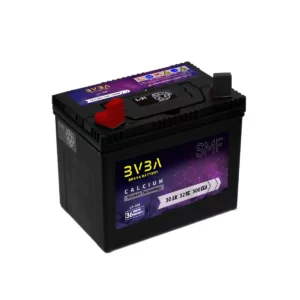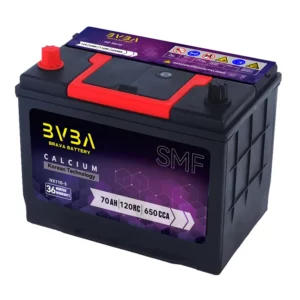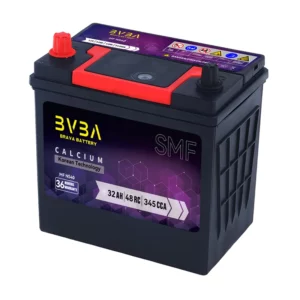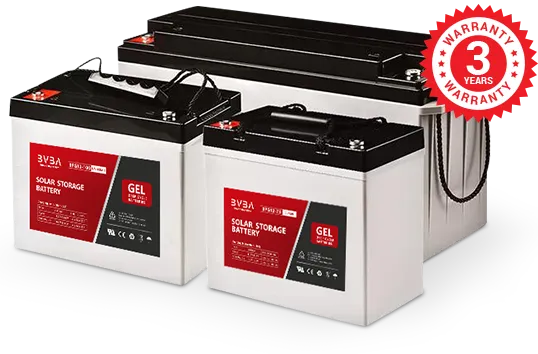What is LiFePO4 Battery?
LiFePO4 battery is one type of lithium battery. The full name is Lithium Ferro (Iron) Phosphate Battery, also called LFP for short. It is now the safest, most eco-friendly, and longest-life lithium-ion battery.
Below are the main features and benefits:
Safe —— Unlike other lithium-ion batteries, thermal stable made LiFePO4 battery no risk of thermal runaway, which means no risk of flaming or explosion.
LiFePO4 battery will not burn until it reaches 500 °C, there is no risk of flaming in our battery pack with triple protections.
Eco-Friendly —— Iron is a common metal, while nickel and cobalt are limited metals. They are expensive and need careful treatment and recycling.
Super Long Cycle Life —— Chemical stability, the extremely strong crystal structure of iron phosphate makes LiFePO4 battery does not degrade. During charging and discharging, it will not fade under the continuous actions of lithium ions.
Now the cycle life of LiFePO4 battery can reach over 6000 times if under common conditions.
For more basic information, you can also check Wikipedia.
Lithium iron phosphate battery
Applications of LiFePO4 Battery
Solar and Renewable Industry
LiFePO4 battery is ideal for energy storage systems (ESS) such as solar and other renewable systems. Because LiFePO4 battery is safe, efficient, and super long life.
In developed economies, LiFePO4 battery became the most popular new generation of energy storage battery.
Different battery packs of 12V, 24V, and 48V are always chosen as replacements for original lead-acid batteries.
For Small Solar System
MonoBlock LiFePO4 Battery is a good choice for small solar systems, like 12V/24V200Ah, or higher to 48V300Ah.
For example, BattleBorn 12.8V battery is the same size case as the original lead-acid battery, could be directly replaced and upgraded.
For Large and Commercial Solar Systems
For large solar energy storage systems like 50kWh, Modular LiFePO4 battery will be more suited.
Modular LiFePO4 Battery is a kind of server rack battery, scalable to 50kWh in one group, and more groups can be paralleled. It is also more stable due to the advanced BMS.
For Residential Solar System
Another popular choice for home solar battery is the “power wall” type. The big difference is the good looking, so it can be fit into the interior decoration.
Telecom Base Station
Modular 48V LiFePO4 battery is more popular for large energy storage systems (ESS) used in communication base stations.
With the development of lithium-ion battery technology, because of its high energy density, high stability, high-temperature performance, super long cycle life, environmentally friendly, and other advantages, LiFePO4 batteries are more and more widely used.
The harsh environment and humidity have a significant influence on the stability of telecom base stations. Therefore, a well-performing battery is very important for stabilizing the network signal. This is exactly where LiFePO4 batteries come into action. In addition, the presence of 5G technology will drive the demand for LiFePO4 batteries in telecom base stations. As the cost of Li-ion batteries decreases, LiFePO4 batteries are gradually becoming a more economical investment for telecom towers.
Now in China, most telecom stations are upgraded to LiFePO4 batteries. We are also honored to take part in the program.
UPS and Backup Power
For UPS systems, traditional lead-acid batteries are low in price. Besides, they have extremely high instant discharge currents. And they are suitable for low-temperature discharge.
In these aspects, LiFePO4 batteries do not perform any better than lead-acid batteries.
The advantage of LiFePO4 batteries is, that they have 8 times the cycle life of lead-acid batteries.
Cycle life is especially important in regions where power may shut off several times a day.
Then the backup power system becomes actually a deep cycle storage system, more cycle life means longer service life.
Generally, lead-acid batteries need to be replaced in 3-4 years, while the replacement period for LiFePO4 batteries is 9-10 years or even 15 years.
Of course, if you are in an area where power outages are rare, only a few times a year, which means the battery bank is floating at 99% of the time, lead-acid battery is a good choice.
In one of the conditions, there are also the demands of high rate LiFePO4 battery downtown. For those UPS systems in those CBDs, even though the cost of the high rate LiFePO4 battery is high, but comparing to the room cost, it is still worth saving more floor space.
Golf Cart and Low-Speed Vehicles
Now a lot of the low-speed vehicles, such as Golf Carts, Patrol Carts, and Tourist Carts, are using LiFePO4 batteries instead of Trojan motive batteries.
LiFePO4 battery is lighter, faster, and has better performance in high temperatures.
Electric Vehicles
High Rate LiFePO4 battery is used in EVs, because of its safety. BYD is using their blade cells in the new series of “HAN”, the dynasty cars.
CCTV and Security System
In a security monitoring system, the role of the battery bank is similar to a UPS, as a backup power system in case of power failure.
RV, Motorhome, Caravan, Marine, Boats
Since the recommended charge/discharge current is 0.5C for LiFePO4 batteries, it is much higher than 0.2C for lead-acid batteries. LiFePO4 batteries are more appropriate than lead-acid batteries for these applications.
Super longer cycle life of LiFePO4 batteries is also a huge advantage because the battery system is cycled through deep charging and discharging.
What are the Important Parameters of LiFePO4 Battery?
What should we take care of when choosing a LiFePO4 battery? What are the important parameters of a LiFePO4 battery? How to choose the right battery?
Below are the important parameters:
- Battery Voltage
- Max Charge Current
- Max Discharge Current
- Cycle Life
- Warranty
- Extra Functions
How to Properly Charge LiFePO4 Battery?
The charge process of LiFePO4 batteries is similar to lead-acid batteries. It can also be divided into three stages.
Constant Current (CC) Charge:
Constant charging current, e.g. 0.5C, the voltage is continuously increasing during the charge, reaching the max voltage. (Such as 14.6V)
Constant Voltage (CV) Charge:
Constant voltage, slowly the current decreases to below 0.05C.
Trickle Charge:
This part can also be called float charge, but for LiFePO4 batteries, float charge is not necessary.
If lead-acid batteries do not reach 100% SOC, sulphation will happen on plates. It will result in a capacity loss.
But there is no need for LiFePO4 battery to charge to 100%, there is no sulphation. On the contrary, if a LiFePO4 battery is overcharged, too many lithium ions will accumulate at one end of the electrode, which will lead to electron escape.
The best charge/discharge cycle for LiFePO4 battery is 10% to 90%, but in my opnion, 5% to 95% is good enough.
Charge Current
It is recommended to keep the charging current of LiFePO4 batteries below 0.5C, as overheating due to rapid charging can cause a negative effect on the battery. Although the current limit for your battery is 1C or higher.
Lead-acid batteries are generally recommended to be charged under 0.2C.
Charge Voltage
The charge voltage of LiFePO4 battery is recommended to be 14.0V to 14.6V at 25℃, meaning 3.50V to 3.65V per cell. The best recommended charge voltage is 14.4V, which is 3.60V per cell. Compared to 3.65V per cell, there is only a little of the capacity reduced, but you will have a lot more cycles.
If the battery voltage exceeds, please stop charging immediately. Even if your BMS has a protection cut-off, it is better not to trigger it.
LiFePO4 battery does not need to be float-charged.
If the charger has a float voltage setting, it is recommended to set the float voltage at 13.6V. Then it will not have a charging effect on the battery.
Charge Temperature
The charging temperature range for LiFePO4 batteries is 0°C to 55°C.
It is not recommended to charge below 0°C, theoretically, it is allowed a small current of 0.05C to 0.1C. However, charge under 0°C will crystallize the lithium ions, thus reducing the effective capacity. So, if not necessary, do not charge below 0°C.
There is an advanced type of low-temperature LiFePO4 battery, with internal self-heating built-in, that can be charged at around -10°C.
The BMS controls to heat the battery internally to 5-10°C, which made the battery allowed to charge.
There are also specific low-temperature lithium battery can be charged at -20°C, but the cycle life is not good enough though.
Charge in Series
Before connecting LiFePO4 batteries in series, it is recommended all batteries be fully charged to achieve a high consistency of each battery. Because the circuit will shut down when one battery hits the high-end voltage, or low-end voltage, meanwhile, there can be energy left in other batteries.
Regularly check the battery voltage to keep the voltage difference within 50mV (0.05V), it will effectively extend the battery lifetime.
If the battery voltage difference is large, you can consider a Battery Balancer.
There are many different types of LiFePO4 battery, not only in the sizes and applications, but also it is different in the battery cells.
There are different shapes of battery cells and different current grades of the LiFePO4 battery cells.
What is a good BMS for LiFePO4 Battery Pack?
A good BMS is, to do the protection job well, and have the necessary function that you want!
A basic BMS is also called as protection circuit board (PCB), but now the advanced BMS has more functions like below:
Temperature Protection
Smart BMS-Cell Balancing
Communication Module
Bluetooth Module
Electronic Switch
Self-heating module
GPS module
How is a LiFePO4 Battery Produced?
LiFePO4 battery production can be mainly divided into 2 parts, one is the production of the battery cells, and the other is the assembling, which means the assembly of the battery cells into the various final battery packs we use.
MonoBlock LiFePO4 Battery Instead of Lead-Acid Battery
Now a lot of people are choosing LiFePO4 battery instead of lead-acid battery, because of the super long cycle life and high constant working power.
Yes, LiFePO4 battery is a good drop-in replacement of lead-acid battery in most conditions because the voltage is similar.
The working voltage of lead-acid battery system is always like 12V, 24V, 48V, and higher.
LiFePO4 battery is 3.2V per cell, so there can be many solutions like 12.8V, 25.6V, 48.0V, 51.2V, and upper.
One battery pack with 4 single LiFePO4 cells in series is 12.8V, which is close to 12V, the voltage of the popular 6 cells lead-acid batteries.
The voltages are still in the range of the existed chargers, controllers, inverters. So LiFePO4 battery pack is well suited to replace the original lead-acid batteries without changing anything else. As well as in 24V, 48V systems and higher.
Our MonoBlock LiFePO4 battery is designed to replace the original lead-acid battery directly, not only in the similar voltage but also in the same containers.
Super Longer Cycle Life
Compared to lead-acid batteries, LiFePO4 battery has more than 8 times the cycle life of deep-cycle lead-acid batteries.
The typical recommended DOD (Depth of Discharge) for LiFePO4 batteries is 80% to 90%. It is much higher than 50%, which is recommended for deep cycle lead batteries. Actually, the usable capacity of LiFePO4 battery is 1.8 times of a deep-cycle lead-acid battery while the same Ampere Hour.
Even one LiFePO4 battery is much more expensive than lead-acid battery, but in the long term, LiFePO4 battery is actually cheaper. The cycle life of LiFePO4 battery can reach 3000-6000 times. If we consider for 5 years, 10 years, or even more, LiFePO4 battery is no doubt the better option.
Safe and Stable
Due to the chemical stability, and thermal stability of lithium iron phosphate, the safety performance of LiFePO4 batteries is equivalent to lead-acid batteries.
Also, there is the BMS to protect the battery pack from over-voltage, under-voltage, over-current, and more, temperature protection. With triple protection, the LiFePO4 battery is safe.
With the protections of BMS, LiFePO4 battery can be safer even than lead-acid battery, because there will not be over-charge, or over-temperature.
Zero Maintenance
No maintenance is required.
VRLA batteries still require appropriate maintenance and effective control of voltage & current, to achieve the best working condition and cycle life. Meanwhile, LiFePO4 batteries require no maintenance due to the BMS protection.
Even smarter, our modular LiFePO4 battery has been built with a data monitoring chip of voltage, current, temperature. The BMS will detect any abnormal condition on its own, thus avoiding potential problems at the very earliest.
Lighter
LiFePO4 Batteries are less than half the weight of lead-acid batteries, saving labor & time cost in installation, replacements, and maintenance.
For example, one 12V100Ah deep cycle AGM battery is around 30kg, while 12.8V100Ah LiFePO4 battery is only 12kg.
High Charge Acceptance Rate
The charging efficiency of LiFePO4 batteries is over 96-99%, compared to 80%-90% for lead-acid batteries. It means a much lower percentage of energy is lost.
In the case of the solar system, it means more energy is saved. Sometimes, it can be critical whether the power is enough, whether the system can be constantly working.
Besides, LiFePO4 battery can be charged to over 90% full within 2 hours, while lead-acid battery always takes 8hours and more.
Higher Power | Discharge Rate | Current Limit
For energy storage type, the max constant discharge current of LiFePO4 battery is 0.5C-1C, while the lead-acid battery is only 0.1C-0.3C. Otherwise, the cycle life of lead battery will be greatly reduced.
In this way, high-power appliances or inverters can easily run with LiFePO4 batteries and may be limited if with lead batteries.
But there is also one thing you should take care of. When the current is over the BMS limit, LiFePO4 battery will cut down the circuit, which lead-acid battery will not.
For example, if your solar system inverter is 5kW, with a 48V100Ah system, both LiFePO4 and lead-acid battery systems will not cut down the power supply.
But if with a 6kW inverter, while the total current reaches 117A, which is over 100A(1C). LiFePO4 battery will cut down the circuit if 100A is the current limit. You have to upgrade the battery to higher current or bigger capacity. Or low down the inverter.
It also happens in power appliances, such as low-speed vehicles. For the motors, there is a peak power with a much higher current than rated power, the current limit should be released.
Working well in high temperature
LiFePO4 battery has a much better high-temperature tolerance.
At a room temperature of 50°C, the cycle life of lead-acid batteries is greatly reduced, while LiFePO4 batteries have no significant influence.
LiFePO4 batteries can work as usual at 50°C.
Weakness: Not allowed to charge below 0 °C.
All lithium batteries are not recommended to charge below 0°C.
That’s why we developed an internal self-heating solution. This solution can be charged at room temperature above -10°C, adapted to cold weather.
If below -20°C, special cell materials are required, but the cycle life is still not ideal. The cycle life under -20°C is always around 300~400 cycles.
LiFePO4 Battery Compared to Other Lithium-ion Batteries
LiFePO4 battery is much safer
LiFePO4 has excellent thermal and chemical stability, making it the safest lithium battery technology available. It will not explode even if there is an internal short circuit.
NMC and other lithium batteries are more likely to heat up during the charging process, leading to thermal runaway, which could cause an explosion.
Much Longer Cycle Life
Lithium iron phosphate is technically proven to have the lowest capacity loss rate, so the effective capacity decays more slowly and has a longer cycle life.
In the same condition, LiFePO4 battery has 50% more cycle life than NMC battery.
More Eco-Friendly
LiFePO4 batteries are made from non-toxic materials such as iron, graphite, and copper, all of which are easily recycled.
Eco-Friendly LiFePO4 Battery
LiFePO4 batteries do not contain nickel, or cobalt, both of which are limited and expensive metals.
More Cost-Effective
In stationary energy storage systems, more people are choosing LiFePO4 batteries due to their safety, longer cycle life, and eco-friendly features.
In terms of price, LiFePO4 has a great advantage over NMC due to the popularity of the materials. Especially for large energy storage systems, LiFePO4 battery is better than NMC cells or other lithium batteries.
Disadvantage: Not High Energy Density
The energy ratio of LiFePO4 battery is lower than NMC battery, which means the weight is higher at the same capacity.
In applications where the weight is important, like small mobile electronic devices, such as cell phones, laptops, and tablets, there will be a significant disadvantage.
The Others
How to Discharge LiFePO4 Battery?
The discharge limits are not that much compared to charging.
But it is very important to check the discharge current/power limit, to make sure it can support your appliances.
It is also recommended that discharge current is below 0.5C to avoid overheating.
Do not empty the battery, it is recommended to hold at least 5% of the battery capacity.
How to Install
LiFePO4 batteries are available in a variety of combinations and terminal styles.
It is necessary to read the manufacturer’s instructions carefully.
12V MonoBlock LiFePO4 battery is a replacement of lead-acid battery, the terminal is the same as the lead battery, and the connection is also similar.
It can be installed in any direction, and please note that the actual voltage of 12V LiFePO4 battery is 12.8V.
While 48V modular LiFePO4 batteries are mounted on specific racks, it is recommended to follow the installation instructions.
How to Maintenance
Requires little maintenance.
If you want, you can check the voltage once per month or several months.
Control of charging voltage and current, the good thing is the BMS is already in control. If you have access to the battery BMS settings, you can change a little bit of the parameters, so the battery can be working better based on your conditions.
Control of discharge voltage and current, under control of BMS.
LifePO4 Batteries Related Products:
Related Products Application:
LifePO4 Batteries Related Posts:
Tag in this article: #LiFePO4 Battery
Tips: more detail information, for deep cycle LiFePO4 battery。


